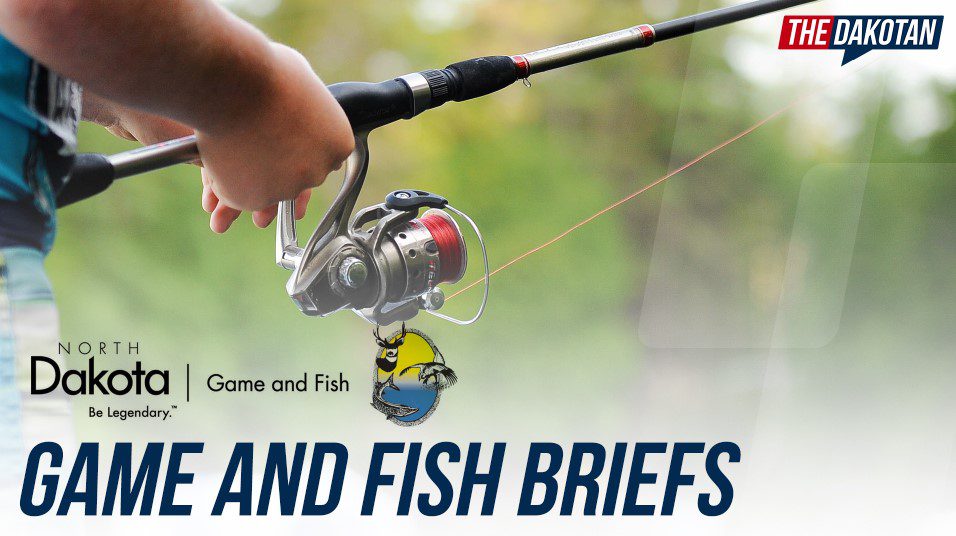

The North Dakota Game and Fish Department’s 2022 bighorn sheep survey, completed by recounting lambs in March, revealed a record 347 bighorn sheep in the grasslands of western North Dakota, up 4% from 2021 and 15% above the five-year average. The count surpassed the previous record of 335 bighorns in 2021.
Altogether, biologists counted 96 rams, 206 ewes and 45 lambs. Not included are approximately 40 bighorn sheep in the North Unit of Theodore Roosevelt National Park and bighorns introduced to the Fort Berthold Indian Reservation in 2020.
Big game biologist Brett Wiedmann was pleased to see an increase in the survey for the fifth consecutive year.
The northern badlands population increased 4% from 2021 and was the highest count on record. The southern badlands population was unchanged at the lowest level since bighorns were reintroduced there in 1966.
“We were encouraged to see the count of adult rams down just slightly from last year, and adult ewes were at record numbers,” Wiedmann said. “Unfortunately, following a record summer count of lambs, winter survival was only 54%, the lowest level on record and well below the long-term average. The lamb recruitment rate was also near a record low. Nearly six months of harsh winter conditions was the likely cause of poor winter survival of lambs.”
Department biologists count and classify all bighorn sheep in late summer, and then recount lambs the following March as they approach 1 year of age to determine recruitment.
Department staff, in conjunction with biologists from the Three Affiliated Tribes Fish and Wildlife Division, also reported the bighorn sheep translocated in January 2020 from Rocky Boy’s Reservation in Montana to the Fort Berthold Reservation performed exceptionally well their third year in the state, as the population has nearly tripled.
There are currently about 470 bighorn sheep in the populations managed by the North Dakota Game and Fish Department, National Park Service and the Three Affiliated Tribes Fish and Wildlife Division. Wiedmann said the next benchmark is 500 bighorns in the state, which seemed improbable just a few years ago.
“Considering how severe last winter was, we were very encouraged by the results of the 2022 survey,” Wiedmann said.
A bighorn sheep hunting season is tentatively scheduled to open in 2023. The status of the season will be determined Sept. 1, following the summer population survey.
Game and Fish issued five licenses in 2022 and all hunters were successful in harvesting a ram.
Paddlefish Snagging Season Opens May 1
North Dakota’s paddlefish season opens May 1, and snaggers should note that the sale and distribution of tags are similar to last year.
Paddlefish tags are available for purchase online at the Game and Fish Department’s website, gf.nd.gov, at license vendors, and during normal business hours at Game and Fish offices in Bismarck, Devils Lake, Dickinson, Jamestown, Lonetree (Harvey), Riverdale and Williston. Snaggers buying tags online or at a vendor should plan accordingly and allow for a few days delivery as tags are distributed through the mail.
The season is scheduled to continue through May 21. However, depending on overall harvest, an early in-season closure may occur with a 24-hour notice issued by the state Game and Fish Department.
Mandatory harvest of all snagged paddlefish is required on Tuesdays, Wednesdays, Fridays and Saturdays. On these days, all paddlefish caught must be kept and tagged immediately. All paddlefish snagged and tagged must be removed from the river by 7 p.m. of each snagging day. Free fish cleaning services again will be provided at the confluence by North Star Caviar. Any fish left at the confluence fish cleaning caviar operation after 8 p.m. the day they were snagged will be considered abandoned and the snagger is subject to a fine.
Snag-and-release of all paddlefish is required on Sundays, Mondays and Thursdays. Participants during snag-and-release-only days need to have a current season, unused paddlefish snagging tag in their possession.
Legal snagging hours are from 7 a.m. to 7 p.m. Central time daily. One tag per snagger will be issued. Snagging is legal in all areas of the Yellowstone River in North Dakota, and in the area of the Missouri River west of the U.S. Highway 85 bridge to the Montana border, excluding that portion from the pipeline crossing (river mile 1,577) downstream to the upper end of the Lewis and Clark Wildlife Management Area (river mile 1,565).
If the paddlefish season closes early because the harvest cap is reached, an extended snag-and-release-only period will be allowed for up to seven days immediately following the early closure, but not to extend beyond May 21. Only snaggers with a current season, unused paddlefish snagging tag are eligible to participate. Only a limited area at the confluence of the Missouri and Yellowstone rivers downstream to the pipeline crossing (river mile 1,577) is open during this extended season. For the extended snag-and-release days only, hours for snagging are 7 a.m. to 9 p.m. CT.
Use or possession of gaffs is prohibited on snag-and-release-only days, and, if it occurs, during the snag-and-release extension period.
All paddlefish snaggers must possess a paddlefish tag, in addition to a valid fishing license for anyone 16 and older. Cost of a paddlefish tag is $10 for residents and $25.50 for nonresidents. Lost or destroyed tags will not be replaced.
The Game and Fish Department will allow camping during the open paddlefish season at Lewis and Clark Wildlife Management Area Pumphouse, and at Neu’s Point WMA. However, no roads or gates will be open at Neu’s Point, therefore camping is allowed in the small Neu’s Point parking lot, and the rest of the WMA for walk-in access. All other WMA regulations apply. Outdoor enthusiasts are urged to be aware of the current fire index.
Snaggers will also notice new concrete boat ramps were constructed at both the confluence and Sundheim Park. Snaggers are reminded that camping is not allowed at Sundheim Park.